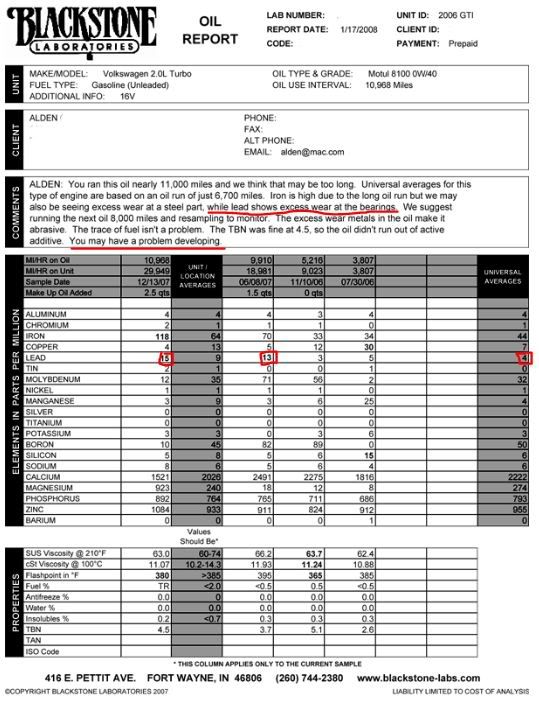A poster on vwvortex posted the following. I also found an old UOA post (posted below). I circled the lead readings in red. The 9000 mile and 18000 mile UOAS were using M1 0w40 while the later ones were various Motul 502 products. Are the particles in the photos bearing wear? Did the earlier UOAs show it?
From vwvortex:
Originally Posted By: corradokidg60;68949559
Changed my '06 BPY oil today, noticed large copper flakes in the oil filter and at the bottom of the pan when draining oil. I've already had my HPFP and cam replaced (at 34k miles) now I'm at 71k miles. I've been using Motul 8100 X-Cess 5w-40 for the majority of my oil changes, Motul 502 Specific for a couple. No CELs, power still there, no emissions issues, APR stage 1 for 40k.
Any idea what this could be?





From vwvortex:
Originally Posted By: corradokidg60;68949559
Changed my '06 BPY oil today, noticed large copper flakes in the oil filter and at the bottom of the pan when draining oil. I've already had my HPFP and cam replaced (at 34k miles) now I'm at 71k miles. I've been using Motul 8100 X-Cess 5w-40 for the majority of my oil changes, Motul 502 Specific for a couple. No CELs, power still there, no emissions issues, APR stage 1 for 40k.
Any idea what this could be?



